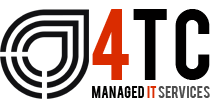What Does Fully Managed IT Support Really Mean for Your Business?
When your business relies on technology to operate, grow, and serve customers, the quality of your IT support becomes critical to your success. Many businesses start with basic helpdesk services, assuming they’re getting comprehensive coverage.
But there’s a significant difference between reactive support and fully managed IT support, and understanding this distinction could transform how your business operates.
Fully Managed IT Support in a Nutshell
Fully managed IT support encompasses comprehensive oversight of your entire technology infrastructure. This includes (but isn’t necessarily limited to):
- Continuous 24/7 network monitoring and threat detection
- Proactive server maintenance and optimisation
- Robust cyber security measures
- Data backup and disaster recovery planning
- Software updates and patch management
- User training and helpdesk support
- Strategic IT planning aligned with business goals
Rather than waiting for problems to occur, fully managed services work to prevent issues before they impact your business operations.
What’s the Difference Between Reactive and Fully Managed IT Services?
Traditional reactive IT support operates like a fire service. Technicians respond when something breaks down. You submit a ticket, wait for assistance, and hope the problem gets resolved quickly. This approach might seem cost-effective initially, but it often leads to extended downtime, frustrated users, and hidden costs that accumulate over time.
Fully managed services take a fundamentally different approach: proactive IT management. We wrote more about this here, but essentially, instead of waiting for systems to fail, managed services continuously monitor your infrastructure, identifying potential issues before they become problems. This proactive stance means fewer disruptions, improved system performance, and predictable IT costs.
Before you brush off disruptions as a minor inconvenience, the 2024 UK Business Data Survey found that one in ten businesses that stored and processed data outside the company premises experienced server downtime in the past 12 months, highlighting the real risks they face when IT systems fail.
Top 5 Strategic Benefits of Going Fully Managed
1. Reduced Downtime and Improved Reliability
When your systems are monitored around the clock, potential problems are caught early. 24/7 monitoring means your IT infrastructure is watched continuously, even outside business hours. This constant vigilance significantly reduces the likelihood of unexpected failures that could halt operations.
2. Enhanced Security and Compliance
Modern businesses face increasingly sophisticated cyber threats. Fully managed IT support includes comprehensive security measures such as firewall management, intrusion detection, regular security assessments, and employee training. These proactive security measures help protect your business data and maintain compliance with industry regulations.
3. Cost Predictability and Budget Management
With reactive support, IT costs can spike unexpectedly when major issues arise. Fully managed services provide predictable monthly costs, making it easier to budget and plan. Additionally, preventing problems typically costs less than fixing them after they occur.
4. Strategic Technology Planning
Beyond maintaining existing systems, IT services within a fully managed model include strategic planning to align technology with business objectives. This means your IT infrastructure evolves to support growth rather than hindering it.
5. Freeing Internal Resources for Growth
One of the most significant advantages of managed IT support is the way it liberates your internal team to focus on core business activities. Instead of dealing with technical issues, which takes up almost two hours of time per week for most small and midsized businesses, your staff can concentrate on serving customers, developing products, and driving growth.
This shift is particularly valuable for growing businesses. Rather than hiring additional IT staff or burdening existing employees with technical responsibilities, you gain access to a team of specialists with diverse expertise – without the associated overhead costs.
What’s Typically Included in Managed IT Services?
Continuous Monitoring and Maintenance
24/7 monitoring forms the backbone of managed services. Advanced monitoring tools track system performance, network connectivity, server health, and security status. When anomalies are detected, technicians can often resolve issues remotely before users even notice a problem.
Patch Management and Updates
Keeping software current is crucial for security and performance. Managed services include systematic patch management, ensuring all systems receive necessary updates during scheduled maintenance windows that minimise business disruption.
Backup and Disaster Recovery
Data protection goes beyond simple backups. Comprehensive managed services include robust backup strategies, testing recovery procedures, and maintaining disaster recovery plans. This ensures business continuity even in worst-case scenarios.
Security Management
Cyber security requires constant attention (especially for remote employees). Managed services provide ongoing security monitoring, threat detection, incident response, and regular security assessments. This multi-layered approach helps protect against evolving threats.
User Support and Training
Beyond technical maintenance, managed services include comprehensive user support. This covers helpdesk services, software training, and guidance on best practices. Well-supported users are more productive and make fewer security mistakes.
The Value of Expert Partnership
Choosing fully managed IT support means partnering with specialists who understand both technology and business needs. Rather than managing multiple vendor relationships, you work with a single team that takes responsibility for your entire IT infrastructure.
This partnership approach brings several advantages:
- You gain access to diverse expertise across different technologies and specialisations
- Your managed service provider stays current with evolving threats and emerging technologies
- You benefit from proven processes and established best practices
And, as an extra bonus, the provider takes accountability for system performance and uptime.
Why Expertise Matters Even More for Small Businesses
Technology continues evolving rapidly, and maintaining expertise across all areas becomes increasingly challenging for individual businesses. Managed service providers invest heavily in training, certifications, and staying current with technological developments.
This expertise ensures your business benefits from best practices, optimal configurations, and proactive problem-solving. Partnering with an experienced provider like 4TC means working with specialists who understand both technical complexities and practical business needs.
Making the Business Case
The decision to invest in managed IT often comes down to comparing costs versus benefits. While managed services do require a monthly investment, the value typically far exceeds the cost when you consider reduced downtime, improved productivity, enhanced security, and freed internal resources.
Many businesses discover that comprehensive IT services actually cost less than their previous reactive approach when hidden costs are properly accounted for. These hidden costs include staff time spent on IT issues, productivity losses during downtime, security incident recovery, and the opportunity cost of not focusing on core business activities.
The Strategic Investment Decision
The question for most businesses today should be whether they can afford to operate without comprehensive, proactive IT management. With technology becoming increasingly central to business operations, reactive support approaches simply cannot provide the reliability, security, and strategic value that modern businesses require.
Fully managed IT support represents a strategic investment in your business’s operational foundation — ensuring technology enables growth rather than constraining it.
Want to find out how we can help you? Let’s talk about the benefits of managed IT services for your business.










